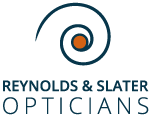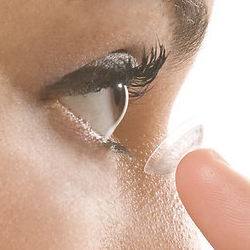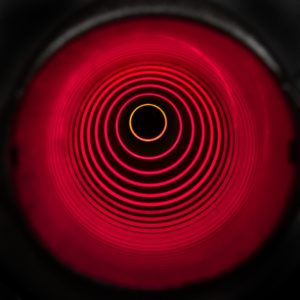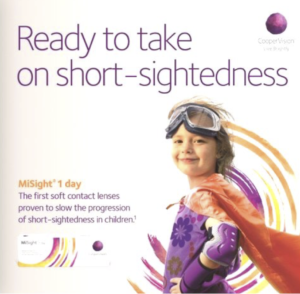Why are our children becoming more Shortsighted?
By 2050, it is estimated that 56% of Europeans will be short-sighted and the number of people with myopia (short sight) is rapidly increasing within our nation and as a species. In 1958, 10-20% of the population of China was myopia, in 2012, this figure had risen to 90% of the population. Europe and the UK are quickly following suit. Researchers and practitioners are starting to call this huge change an epidemic.
“By 2050, it is estimated that 56% of Europeans will be short sighted”
What does it mean to be short-sighted?
Short-sightedness brings complications and is becoming more common in children. The risk of eye conditions such as glaucoma, retinal detachment, myopic macular degeneration and poor vision greatly increases in short-sightedness.
There is a huge amount of ongoing research into myopia and myopia progression. If we can reduce and stop children from becoming shortsighted, we can reduce the chance of eye health complications, poor vision, cost and inconvenience of spectacles and contact lenses for short-sightedness, and improve quality of life.
What causes Short-Sight?
Key driving factors for short sight are emerging and our lifestyles are thought to be a major cause. Increased ‘near work’ and close activity as children, combined with less far distance and outdoor activity, are believed to be a great contributor. The reasons why are still being researched.
Another risk factor for short sight is genetics. If one parent is short-sighted, a child is 3x more likely to be myopic. If both parents are short-sighted, a child is 7x more likely to be myopic.
“If both parents are short sighted, a child is 7x more likely to be myopic”
Treatments for Short-Sight: Myopia control
Myopia control is a method that Optometrists, Ophthalmologists and Contact Lens Opticians use to slow the progression of myopia in children, based on firm clinical research.
Myopia control takes on 4 major forms – education on lifestyle, Ortho-Keratology (Ortho-K) fitting, MiSight contact lens fitting and varifocal/bifocal spectacle lens fitting.
Lifestyle
Indoor activity and activities at a close distance, such as reading and screen use must be balanced with plenty of outdoor activity with a long working distance. It is recommended that children spend at least 90 minutes a day of outdoor activity looking at far distances – think football, netball, walking, cycling. Encourage your children not to hold near objects – such as books and screens – too close.
Orthokeratology
Orthokeratology, or Ortho-K is proven to reduce the rate of progression of myopia in children. Ortho-k involves wearing a special contact lens, an EyeDream contact lens, overnight. On waking, you remove the contact lens and have clearer vision throughout the day, without the use of glasses or contact lenses. The ortho-k lens works by gently altering the shape of the cornea, the front of the eye, to correct short sight. The effects are fully reversible, safe and suitable for children. They are suitable for prescriptions up to -6.00D and can reduce the progression of short sight by 50%.
MiSight contact lenses
Coopervision MiSight contact lenses are proven to slow the rate of progression of myopia in children by an average of 60%. They are a soft, comfortable contact lens that is worn throughout the day, to correct vision and reduce progression of short sight. They are ideally worn for 6 days a week, 10+ hours a day to maximise their effectiveness. They work by ActivControl technology – the lenses have zones within the lens of defocus. These areas of defocus go unnoticed by the wearer who still gets clear, comfortable vision. These myopic defocus areas work to stop the eye from lengthening and therefore stop the eye from becoming more short-sighted.
MiSight contact lenses are suitable for children aged over 7-8 and up to -6.00D myopia.
Varifocal and bifocal spectacle lenses
This option gives a child clear and comfortable vision in spectacles. The varifocal spectacle lenses work by including areas of defocus at the edges, combined with relaxing the focus of the eyes for close-up vision, to reduce progression of myopia. Bifocal lenses relax the focus of the eyes for close-up vision and the research states that bifocals (specifically an E-line type bifocal) are more effective than varifocals at reducing progression of myopia in children.
However, varifocal and bifocal spectacle lenses are seen as a better option than standard single-vision spectacle lenses for reducing the rate of myopia, BUT their efficiency is more unpredictable than MiSight or Ortho-k lens options. At this time, Ortho-k and MiSight contact lenses are the best choices for slowing myopia in children.

6 Treatments for Children’s Short-Sightedness:
1. Less near viewing – hold close work further away
2. More outdoor activity
3. Wear glasses or contact lenses as instructed by your Optometrist or Contact Lens Optician
4. Have regular eye checks – short-sighted children must have the correct and full prescription. Leaving myopic children without spectacles or wearing spectacles that are not strong enough has been proven to speed up the progression of their short-sightedness.
5. Wear Ortho-K EyeDream lenses. These lenses can reduce the progression of short sight by 50%.
6. Wear Coopervision MiSight contact lenses – These contact lenses can reduce the progression of short sight by 60%.
Get Your Child’s Eyesight Tested with Reynolds & Slater Today
If you are concerned about your child’s sight or haven’t taken them to have them checked recently, booking an eye exam couldn’t be easier.
At Reynolds & Slater our experienced opticians know all of the warning signs for eye conditions in children, alongside treatment plans to help make sure they can enjoy their childhood without any sight issues.
Get in touch with our team today to book your child into their next appointment, or check out our blog for more useful information about eyecare in Cornwall.
More information:
If you would like more information on any of the content of this article, please visit our website or contact us at Reynolds Opticians by phone or email. You can also visit these external websites:











